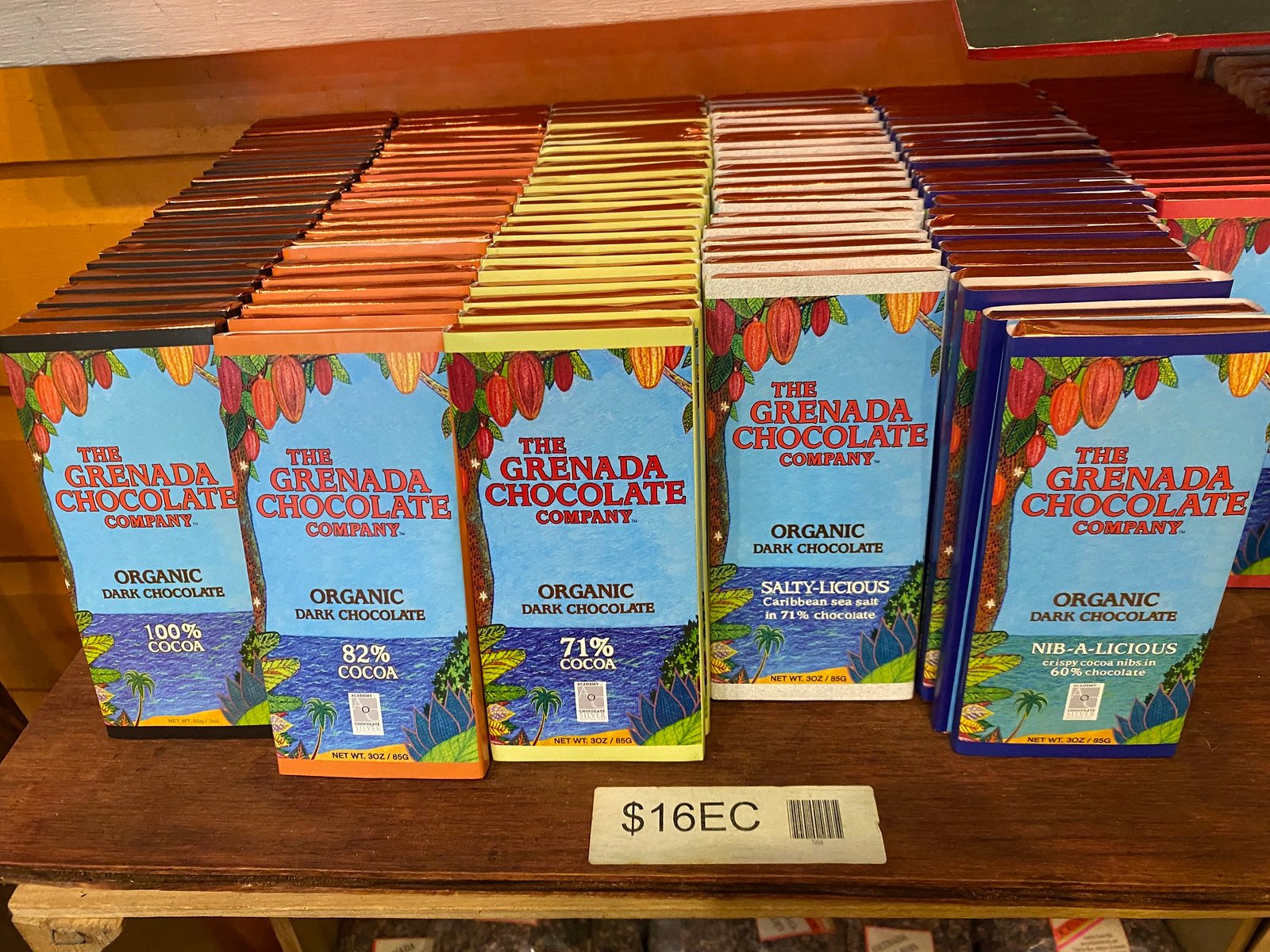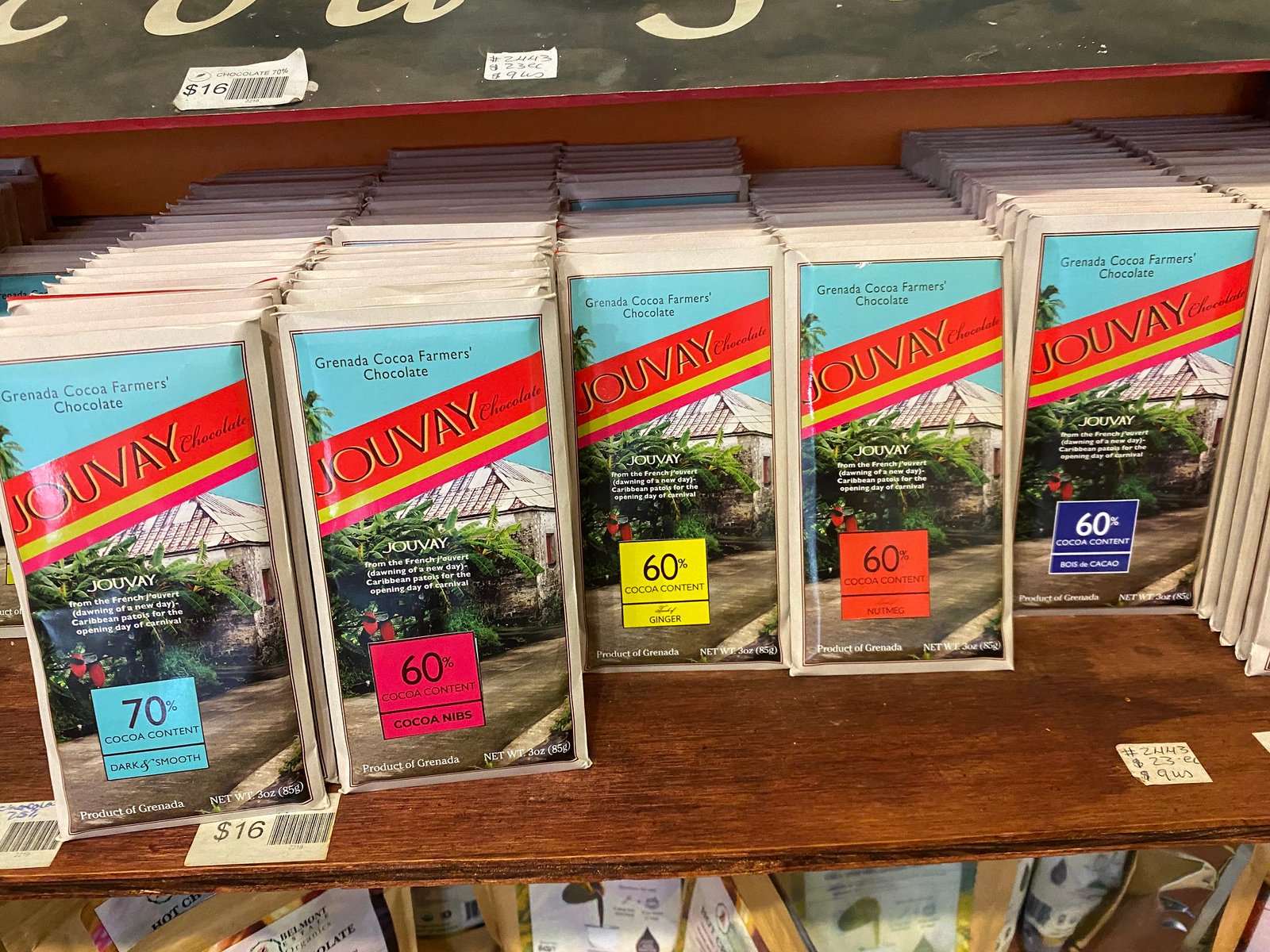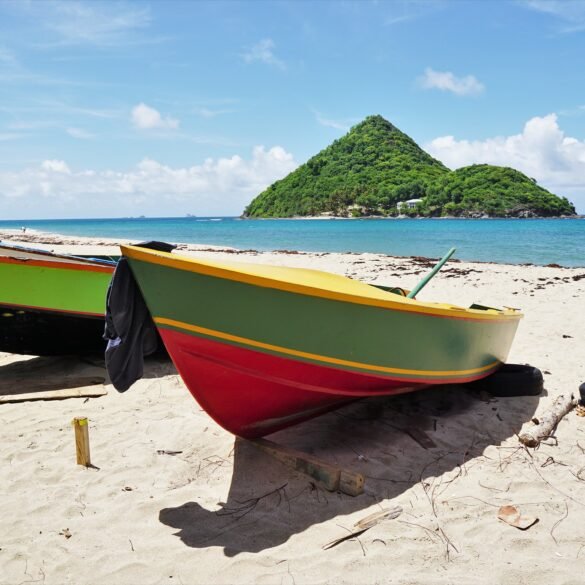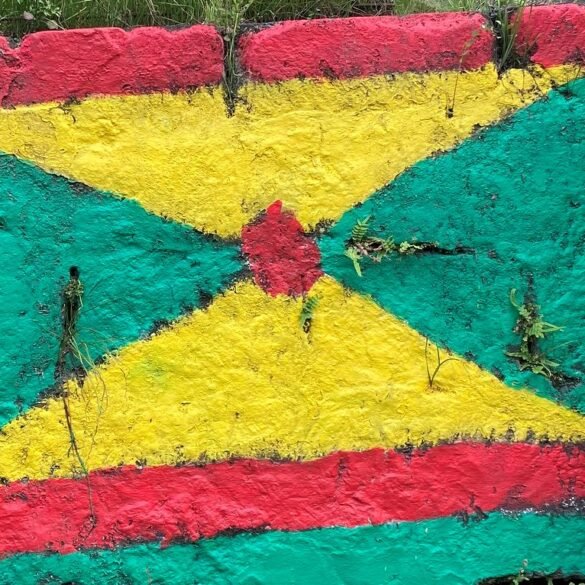We have been to a lot of coffee tours all around the world - Jamaica, El Salvador, Puerto Rico, Guatemala, and a fair share of brewery and distillery tours in Mexico and the U.S., but in Grenada, we got our first chance ever to tour a chocolate factory. In fact, we got so excited that we visited three!
The island of Grenada has the perfect climate, altitude, and rich volcanic soil for cacao trees to grow and thrive. Unlike Central and Latin America, Grenada has no low-quality cacao varieties at all, and every cacao pod produces only the best-tasting chocolate. On top of that, the Spice Island has incredible natural biodiversity with coconuts, mangoes, bananas, nutmeg, and various other trees and plants growing among the cacao trees, and as roots of these trees intermingle, a bit of flavor is shared with the cacao trees. And that’s why local chocolate experts claim that Grenadian cacao tastes different from the rest - aromatic, spicy, and fruity.
I could not wait to judge for myself. We started our chocolate journey on Day 2 in Grenada, on an overcast and occasionally rainy day in St. George’s, far from all the cacao groves and factories. As the occasional drizzle transformed into a pouring blast of rain, we did what we always do when the weather turns against us – we went to a museum. We ran through the narrow, cobblestone streets, hiding under our umbrellas until I could finally see the House of Chocolate Museum. Our usual choice of a museum would be art or history, but in Grenada, chocolate is both art and part of history.
We read through the “History of Cacao in Grenada” exhibits and were particularly fascinated by the “Trade Cacao Like the Aztecs” chart which claimed that 10 cacao beans can be traded for 3 eggs and 1 fully ripe avocado or… “1 lady to stay overnight”. I am not one to judge an ancient civilization on their system of values, but this was too funny to pass up. There was a lot of information on how cacao was produced and exported through the years and how Grenada finally came to produce its own chocolate instead of exporting cheap cacao beans. In the end, we watched a live presentation of de-shelling cacao beans and grinding cacao nibs found inside, with a chance to taste the resulting raw unadulterated cacao paste. It was powerful, bitter, yet surprisingly palatable. Victor didn’t seem to find it as bitter as I did and assured me that if this was commercially available, this would be his favorite type of chocolate.
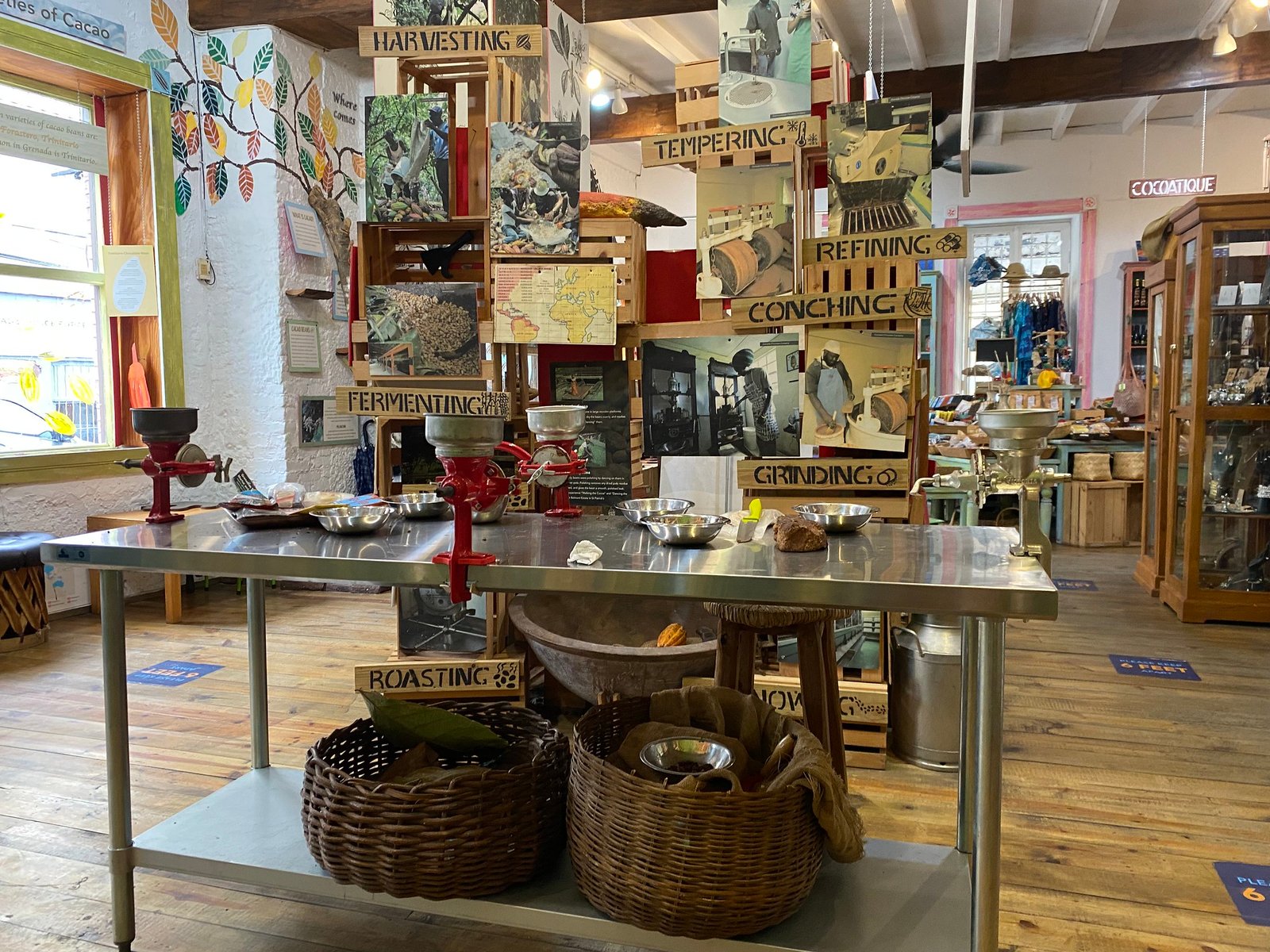
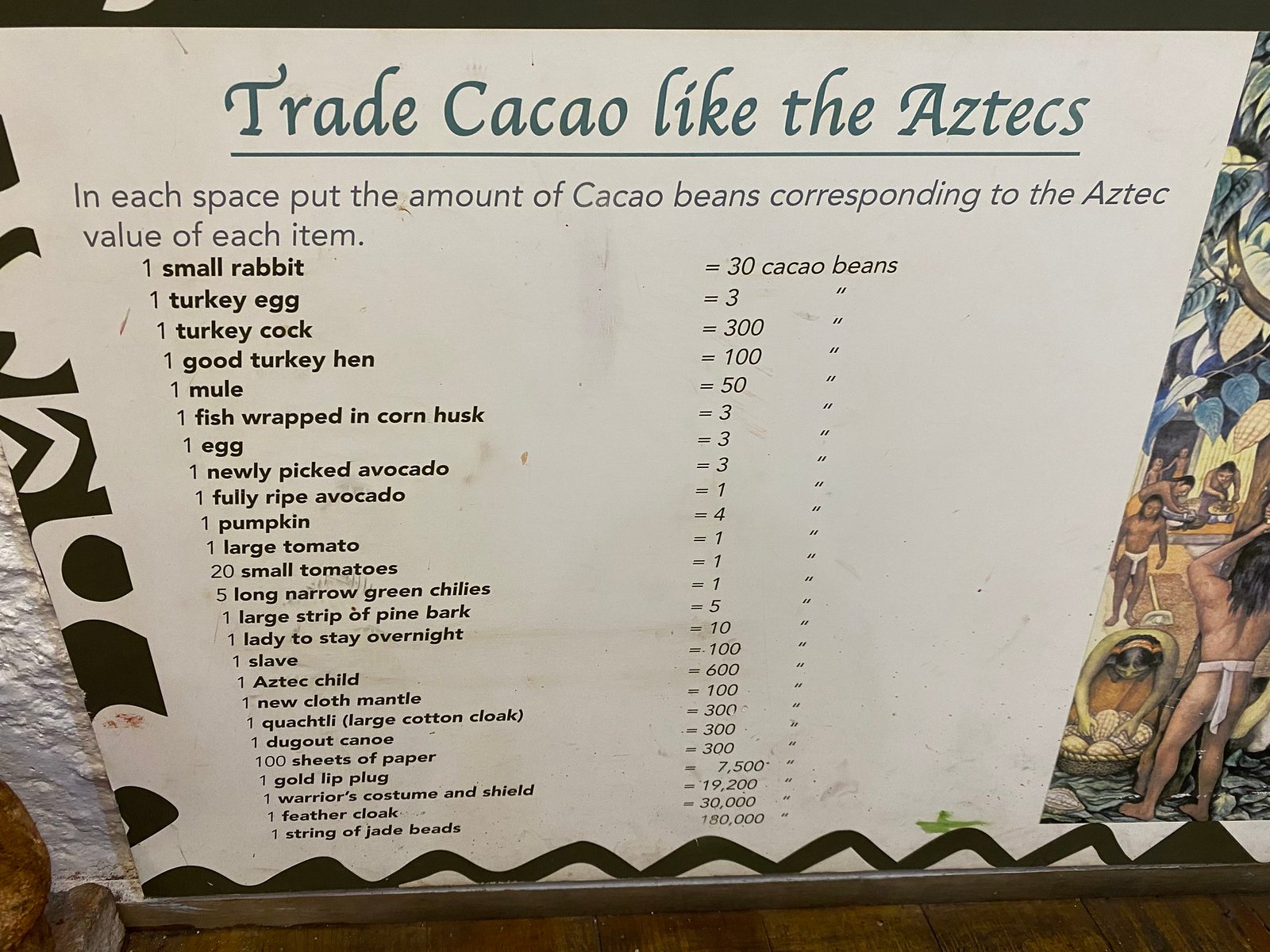
But the best part was the small café in the back that had a variety of chocolate samples on their counter for free, as well as the mysterious sounding “chocolate tea” available for only $4. We tried every sample, the incredible and aptly named Dark & Smooth, the crunchy and strong-flavored Cacao Nibs, the spicy and invigorating Ginger, and nutty and earthy Nutmeg. We finished our visit sipping on chocolate tea, the smooth blend of cacao, cinnamon, and nutmeg, sweetened with condensed milk. I presumed this would be something like hot chocolate and couldn’t be more wrong. It was made with water, rather than milk, and had an oily, rich and bitter taste.
On Day 4, after renting a car and making our way to the north of the island, we finally visited the first chocolate factory. Jouvay was the brand of chocolate we tasted in the House of Chocolate, and I was looking forward to visiting the Jouvay Chocolate Factory for more samples and to learn how it’s possible to transform a cacao pod growing on a tree into the most delicious substance on earth. Our guide showed us a cacao pod and broke it apart to show us the cacao beans and cacao pulp inside. I was surprised that the pulp was edible, and it was juicy and refreshing and interestingly enough had a citrusy taste. The guide explained that the pulp is not removed but is left on the cacao beans to allow fermentation. After that, the beans are dried, roasted, de-shelled, ground into a paste, and finally, the chocolate bars are made right on the premises. We walked through the factory with multiple small rooms and I was shocked in the end to learn that such tiny facilities produce upwards of 3,000 chocolate bars per day. Strangely enough, one of the most fascinating parts of the tour was the left-out containers full of chocolate refuse which, despite being garbage, still looked and smelled good enough to eat.
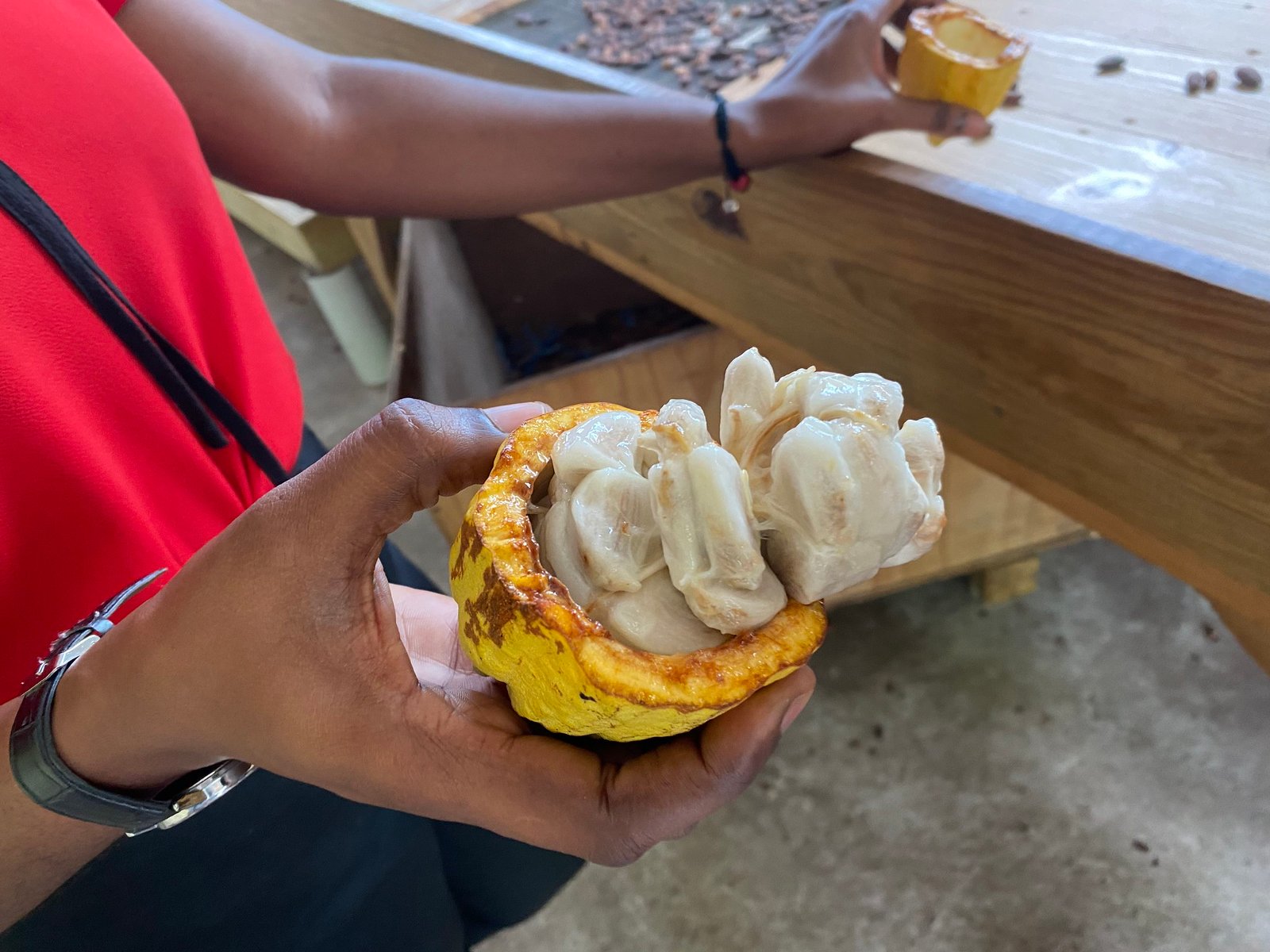
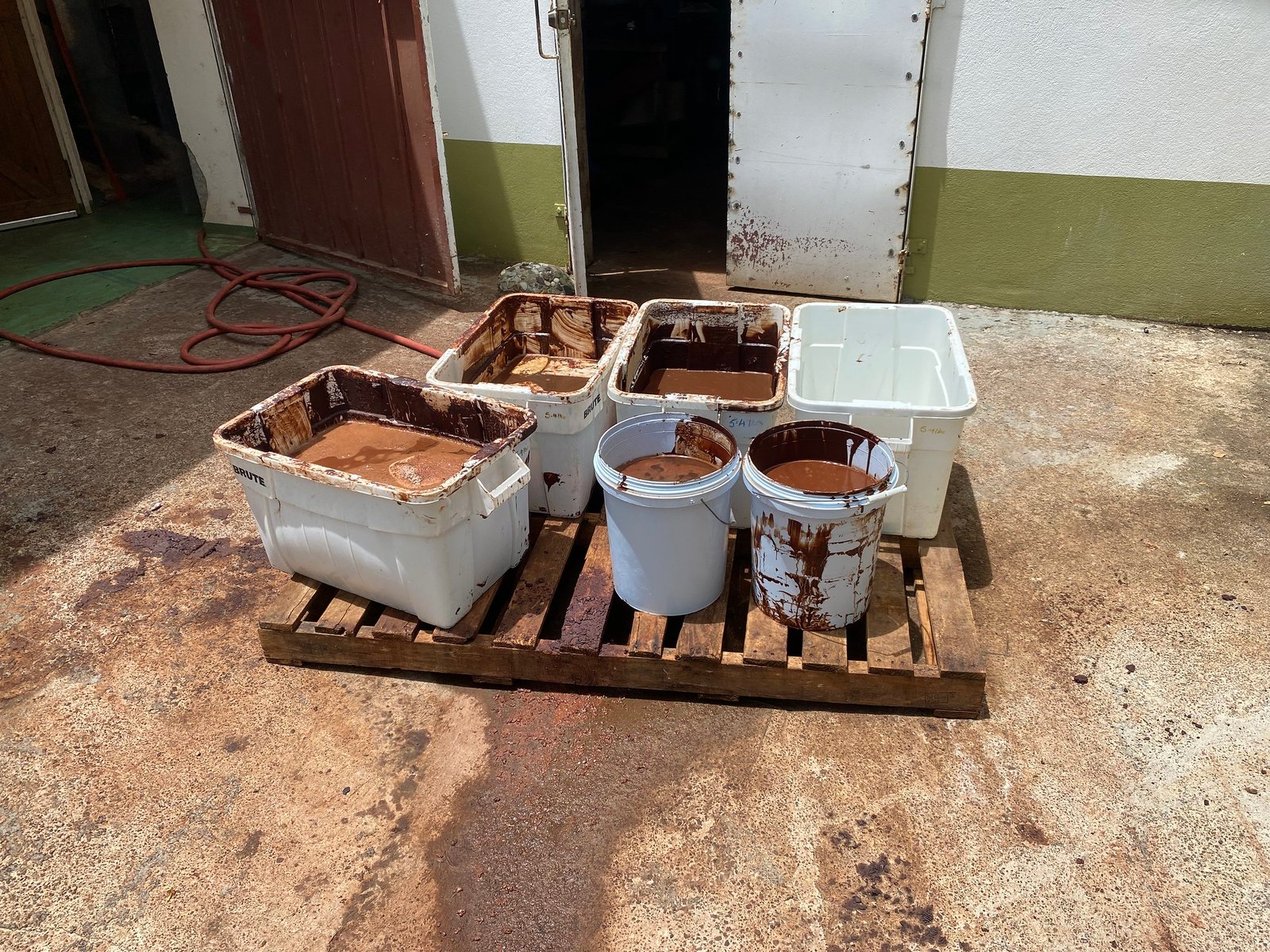
From there, we headed to the nearby Crayfish Bay Organics Cacao Estate & Chocolate Makers, where we saw giant trays of cacao beans drying in the sun. We decided not to take another tour so close to the first, and just walked around outside the factory and strolled by the cacao grove, intermixed with orange trees. The smell of chocolate was so heavy in the air, it seemed that it would permeate all my clothes and hair and I would spend the rest of the day with an air of sweet aroma about me.
The next day, we had a chance to take a tour of Belmont Estate Chocolate Factory. These were much bigger facilities, and the tour was longer and far more comprehensive. There were about 8 people in our group and while we waited for the guide to arrive, we gathered around a large table covered with local fruits, nuts, and herbs. Within minutes, we had an unofficial competition in who can name everything on the table and even a family of native Grenadians weren’t sure of a few items. Once the guide showed up, he explained what everything was and how it was used in cooking. He pointed out that the natural biodiversity on this island is one of many reasons why the cacao trees thrive here. Afterward, we went outside to see the drying racks of cacao beans.
“Walking the cacao!” the guide said, “Has anyone heard of it?
We read about it in the House of Chocolate Museum but presumed that this practice was long outdated. Apparently, one slowly walks on the drying cacao beans with their bare feet, shuffling carefully, in order to move the beans around and turn them over to ensure even drying.
“This is how we add love to the chocolate!” laughed the guide, “Can I have some volunteers?”
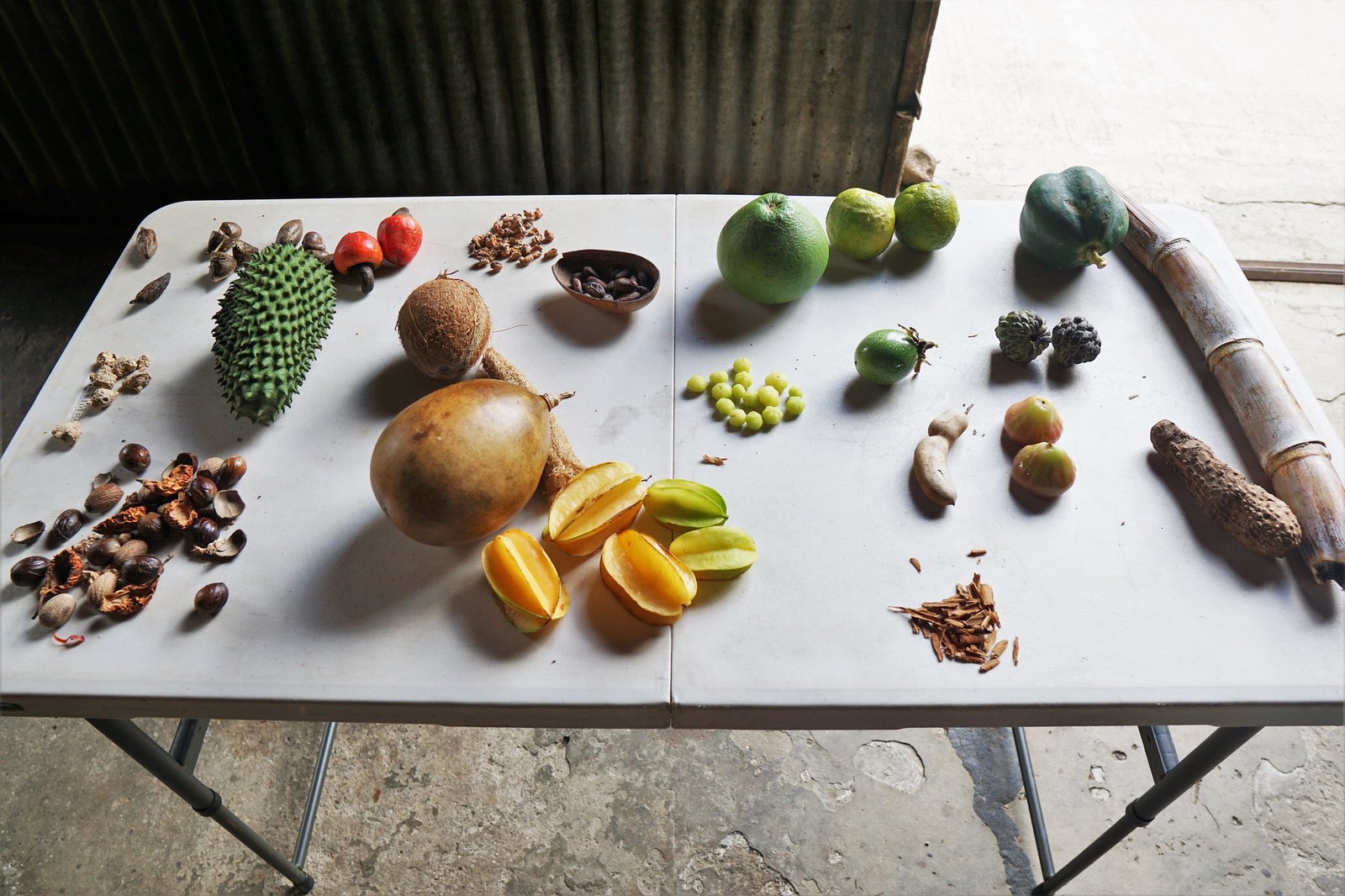
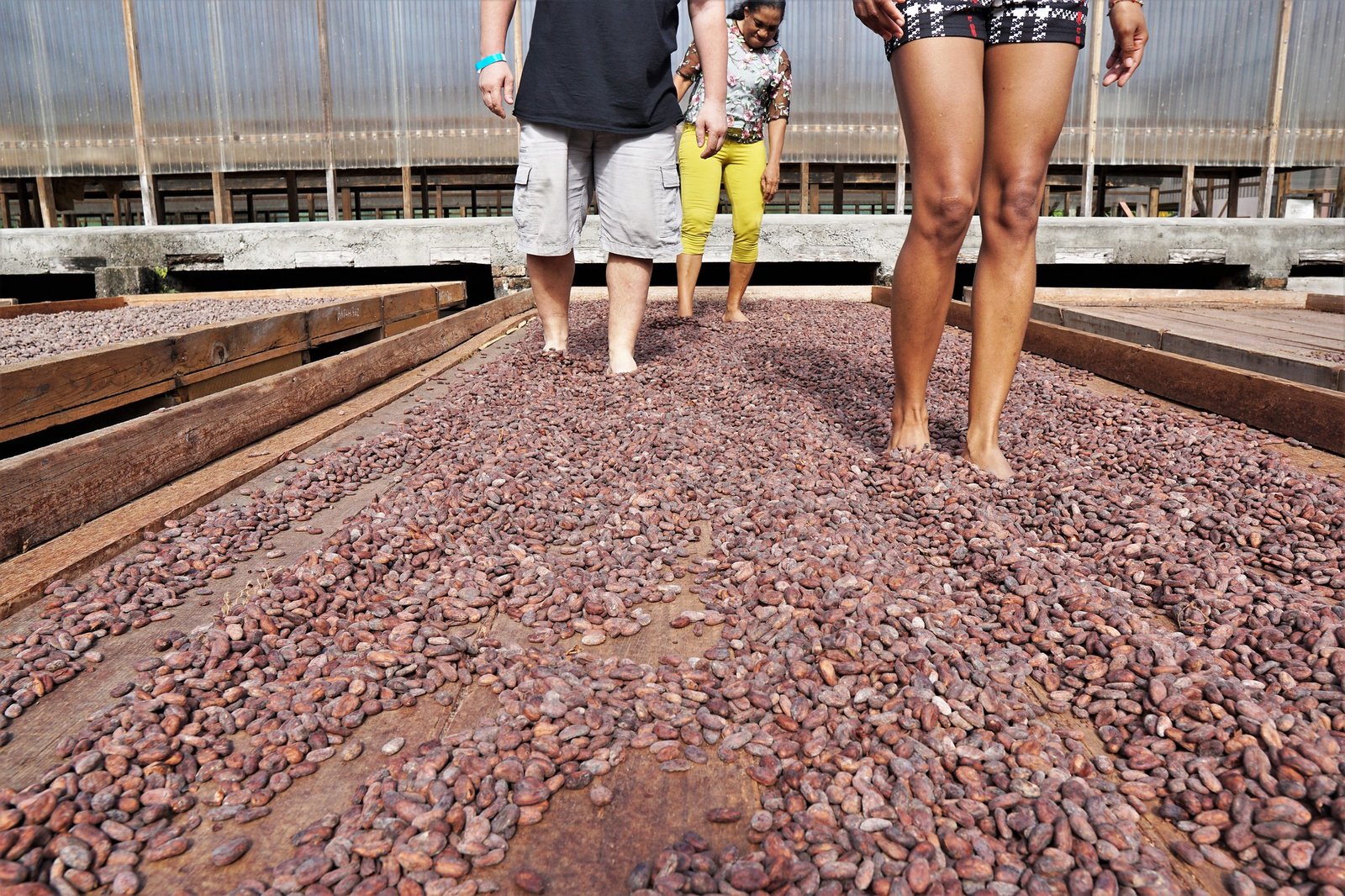
Victor and two other people came forward, took off their shoes, and mounted the platform. They shuffled back and forth, giggling, and I was surprised to see that the cacao beans didn’t crack under their weight. Afterward, we went inside a modern drying facility where the guide showed us how beans can also be flipped with a wooden rake. No one was impressed and we all wanted to go back out to the sun-dried and foot-walked cacao beans outside.
“How do I make sure the chocolate bars I buy in the gift shop have been walked on?” I joked.
“We did plenty of taste tastes and both methods taste exactly the same!” the guide assured me.
We bought plenty of chocolate bars to take back home with us and of course, it turned out to not be nearly enough. I still don’t know what makes Grenadian chocolate so good – maybe it’s the flavors imparted from nearby fruit trees, or the local custom imparting a bit of love into the beans by “walking the cacao”, or the dedication to simple organic ingredients and tree-to-bar method of producing the chocolate right next to the cacao groves. All I know is that Grenadian chocolate is undeniably delicious and never lasts long. In fact, ours was gone within a few days of arriving back in Chicago. Thankfully Grenada exports their chocolate all over the world and I have been on a mission to find it in our local Chicago stores. If you see any on the shelves, do let me know!
